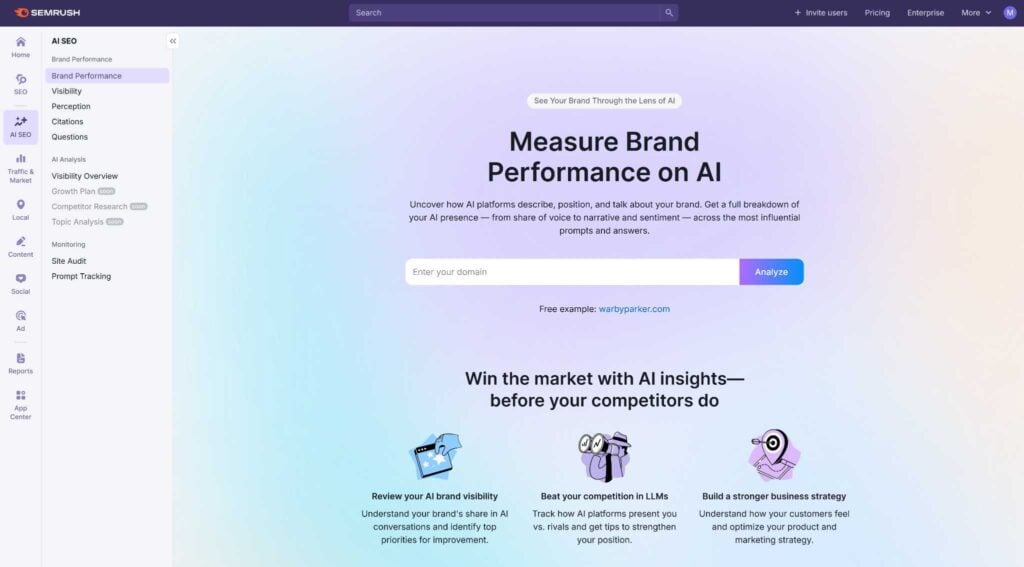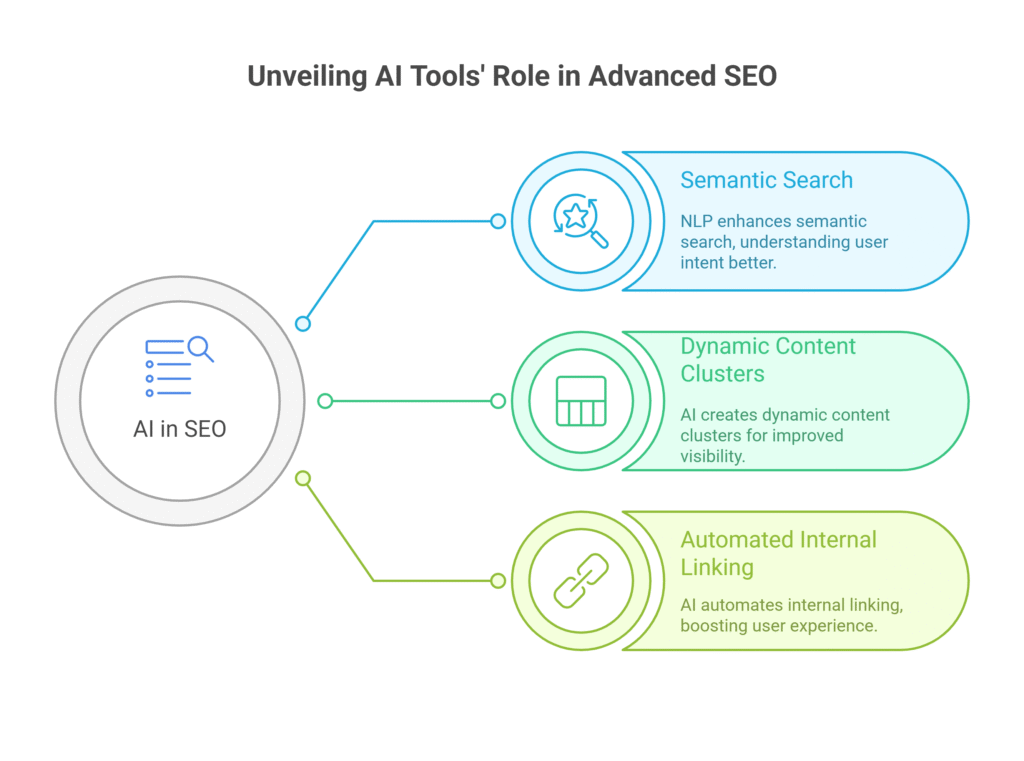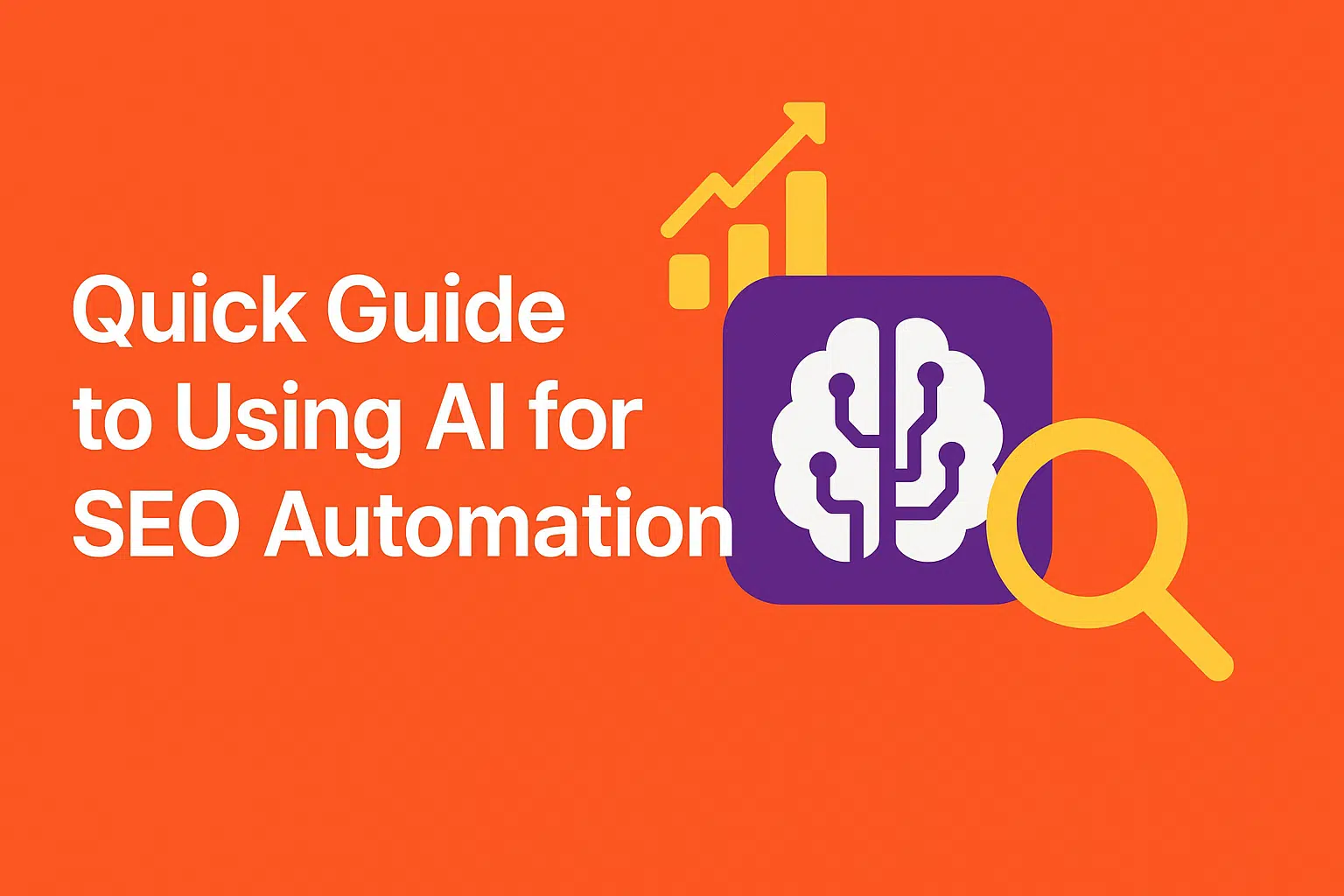AI improves routine SEO tasks by making automatic keyword research, content creation, and performance tracking. It processes large volumes of search data, identifies high-performing keywords, and adjusts strategies at scale. This technology tailors search results by studying user intent and suggesting targeted updates. Businesses save time and increase efficiency as AI tools generate useful insights that drive improvement and predict emerging trends. Making automatic transforms basic SEO tasks into data-driven tasks that boost rankings and engage users. With machine learning processing millions of queries per minute, AI constantly refines strategies and strengthens performance .
Top differences between manual and AI SEO
Manual SEO depends on human gut feeling, offering a customized touch but often leading to slower processes. In contrast, AI SEO uses machine learning to analyze data quickly, detect rising trends, and adjust strategies in real time. It reduces repeating tasks while improving precision by processing huge volumes of data. Whereas manual methods rely on straightforward keyword matching and gut feeling, AI SEO delivers highly customized results with scalable making automatic, thus driving measurable growth and efficiency.
How AI supports faster keyword analysis
AI speeds up keyword analysis by processing large datasets within minutes and quickly finds emerging trends and hidden chances that manual research might overlook. Advanced algorithms group keywords by intent and relevance, ensuring that the content targets the right queries. This rapid pace boosts campaign speed, letting real-time adjustments in SEO strategies. Intelligent tools streamline competitor review, predict future search patterns, and maintain websites’ competitive advantage. Such quick review supports smarter content decisions, leading to improved performance and driving a lot higher traffic volumes and consistent rankings.
“Generative AI is a game-changer for scaling content and boosting efficiency. It speeds up keyword research and provides valuable data insights for fine-tuning our content strategies. I don’t think we’re at a stage where AI can fully take over these processes. But, each day we get closer, for example I know someone with a side hustle that used to involve a lot of manual work to produce a blog, they now use AI to aggregate and summarize topics from various sources, then use NLP to cluster related topics.”
Mark Hayes, Head of Growth at TASK Group
Steps to Start With AI SEO Automation
1. Define SEO goals clearly
Begin by setting up trackable SEO objectives for AI-driven projects through finding target metrics such as traffic, engagement, and conversion rates. Set benchmarks to check performance gains and assign resources with accuracy. Clear goals guide your strategy and help align AI tools with long-term business goals. Define targets that promote growth, monitor progress carefully, and adjust plans as needed to stay ahead.
2. Choose the right AI SEO tools

Select AI SEO tools that integrate well into your existing workflow. Look for platforms that offer strong keyword analysis, content optimization, and link-building features while ensuring reliable support and a proven track record. This choice uses AI’s ability to boost online exposure and simplifies the decision-making process. Make a data-backed decision to optimize long-term search success effectively.
3. Set up automated content briefs
Automate the creation of content briefs to standardize your making process while using AI tools to extract target keywords, outline the structure, and include SEO requirements on its own. This approach ensures consistency across all content pieces and a lot reduces the potential for manual errors. An efficient brief setup accelerates turnaround times and improves content relevance, simplifying the entire workflow for faster, smarter outputs.
4. Use AI for link building suggestions
Integrate AI-driven tools to find valuable link-building opportunities easily. These platforms analyze competitor backlinks, identify content gaps, and suggest high-quality linking strategies that secure trusted links at a faster rate. This method enhances your website’s trust and ranking potential, making your SEO efforts more effective overall. Improve outreach results with smart, data-driven recommendations that consistently improve your backlink profile.
5. Track SEO performance with AI-driven insights
Monitor your SEO campaigns using AI-powered analysis tools that provide real-time data and useful insights to improve strategies all the time. Automated tracking helps identify content gaps and areas for gains while ensuring that performance remains on track. Many brands have achieved significant growth through this organized monitoring approach, keeping campaigns agile and ahead of market shifts. Consistent tracking of metrics helps prompt, informed decision-making consistently.
Advanced SEO Techniques Using AI Tools

Using natural language processing for semantic search
Employ natural language processing (NLP) to improve your semantic search abilities. This advanced technique interprets user queries by analyzing context and related concepts beyond basic keyword matching. AI provides related signals and supports search engines in understanding the depth and relevance of your content. With NLP, your content incorporates related terms and structured data, matching more closely with user intent, improving relevancy and exposure. This approach changes your content planning strategy while boosting the formation of cohesive topic clusters that modern search algorithms favor.
Creating dynamic content clusters with AI
Develop dynamic content clusters by using AI to group linked topics around central themes. This method arranges data into pillar pages and helping subpages efficiently, ensuring that every piece of content fits into a broader strategy. AI tools identify keyword changes and cluster opportunities, allowing your content to remain both complete and user-friendly. Clustering strengthens internal linking, enhances search engine understanding, and boosts overall site authority by giving structured, relevant content that meets modern SEO demands. In the end, dynamic clusters change content strategy and enhance user engagement a lot.
Automating internal linking with contextual models
Use AI-driven internal linking tools to automate the strategic placement of related links throughout your website. These tools check page relevance and user navigation paths, sharing link equity well across your site. This process not only cuts many manual errors but also ensures that useful pages receive the appropriate power they deserve. Automated linking encourages smoother navigation, strengthens site architecture, and allows dynamic updates in real time as your site evolves. Optimize your internal linking strategy to reinforce content themes and drive user engagement for a sustained positive impact.
Conclusion
AI-driven SEO automation is transforming digital strategies by joining smart tools and smooth insights into every aspect of search optimization. The blend of machine learning with human creativity changes how content is made, refined, and promoted across digital channels. By setting clear goals and using advanced techniques like semantic search and dynamic clustering, businesses can achieve higher rankings and enhanced user engagement. Embracing AI not only simplifies repeating tasks but also creates new chances for growth, finally showing practical steps and advanced methods that yield trackable success in today’s evolving online landscape.
FAQs
Can AI fully replace human oversight in SEO automation?
How do I use AI for keyword research and enhancing search?
What advanced SEO techniques are boosted by AI?
Is AI SEO suitable for small businesses or startups?
How will AI influence SEO moving forward?

Ridam Khare is an SEO strategist with 7+ years of experience specializing in AI-driven content creation. He helps businesses scale high-quality blogs that rank, engage, and convert.



